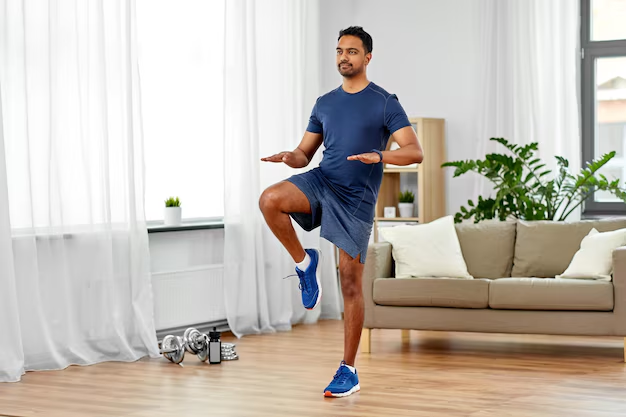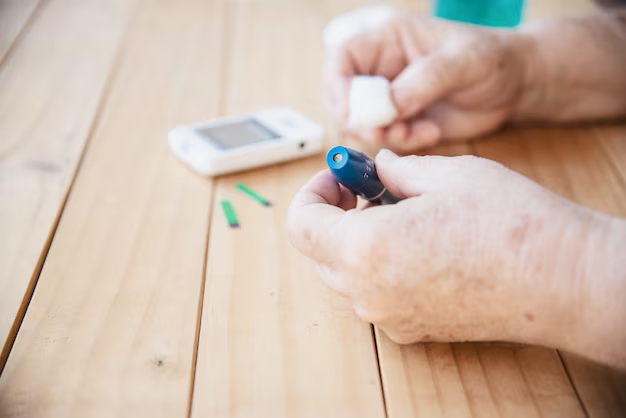Managing blood sugar is crucial for maintaining good health, especially for individuals with diabetes. Exercise has been shown to play a vital role in regulating blood sugar levels and improving overall well-being. In this article, we’ll explore the science behind how exercise lowers blood sugar, the best types of exercises for this purpose, and tips for incorporating them into your daily routine. Let’s dive into the details!
Understanding Blood Sugar Levels
Blood sugar, or glucose, is the body’s primary energy source. It’s vital for cellular function, but maintaining it within normal ranges is essential for good health.
What Is Blood Sugar and Why Does It Matter?
Blood sugar refers to the glucose present in your bloodstream. Your body derives glucose from the food you eat, and it’s used to fuel various bodily functions.
Normal vs. Elevated Blood Sugar Levels
- Normal Levels: Fasting blood sugar between 70-99 mg/dL.
- High Levels (Hyperglycemia): Fasting blood sugar above 125 mg/dL.
Consequences of High Blood Sugar
Elevated blood sugar can lead to:
- Fatigue.
- Increased thirst and urination.
- Long-term complications like nerve damage, kidney issues, and heart disease.
The Role of Exercise in Blood Sugar Regulation
Exercise is a cornerstone in blood sugar management, offering immediate and long-term benefits for glucose control.
How Does Physical Activity Improve Insulin Sensitivity?
Regular exercise enhances the body’s ability to use insulin effectively. Insulin helps cells absorb glucose from the bloodstream, keeping levels stable.
Mechanisms by Which Exercise Lowers Blood Glucose
- Glucose Uptake: Muscles use glucose during physical activity, reducing blood sugar levels.
- Insulin Independence: Muscles can absorb glucose without insulin during exercise, an advantage for those with insulin resistance.
Duration of Exercise Effects
The benefits of exercise can last hours or even days, depending on the intensity and type of workout. This means consistent physical activity can significantly impact long-term glucose management.
Types of Beneficial Exercise
Different types of exercise target blood sugar management in unique ways. Here’s a breakdown:

Aerobic Exercises
- Examples: Walking, jogging, swimming, cycling.
- Benefits: Improves cardiovascular health and enhances glucose uptake during activity.
Resistance Training
- Examples: Weightlifting, resistance bands, bodyweight exercises.
- Benefits: Builds muscle mass, which improves insulin sensitivity and helps regulate blood sugar.
High-Intensity Interval Training (HIIT)
- Examples: Short sprints, circuit training.
- Benefits: Combines aerobic and anaerobic benefits for a powerful glucose-lowering effect in a short time.
Combining Different Modalities
A mix of aerobic and resistance exercises offers the best results for managing blood sugar. For instance, pairing a brisk walk with light weightlifting can maximize benefits.
Recommended Exercise Guidelines for Blood Sugar Management
Following structured guidelines ensures you reap the full benefits of exercise while staying safe.
Frequency and Duration
- Frequency: Aim for at least 150 minutes of moderate-intensity aerobic exercise weekly.
- Duration: Sessions of 30-60 minutes are ideal, but even short bouts of activity can be effective.
Intensity Levels
- Moderate-intensity workouts, like brisk walking or cycling, are suitable for most people.
- For those accustomed to exercise, incorporating higher-intensity intervals can boost results.
Safety Precautions
- Always warm up and cool down to prevent injuries.
- Stay hydrated and listen to your body.
- Consult a healthcare provider before starting a new exercise regimen, especially if you have diabetes or other chronic conditions.
Timing of Exercise and Its Impact on Blood Sugar Levels
When you exercise can influence its effect on blood sugar levels. Here’s what you need to know:
Post-Meal vs. Pre-Meal Workouts
- Post-Meal Exercise: Helps lower blood sugar spikes after eating. A brisk 10-15 minute walk after meals is highly effective.
- Pre-Meal Exercise: Can help stabilize blood sugar levels before eating but may require caution to avoid hypoglycemia.
Morning vs. Evening Workouts
- Morning exercise helps kickstart metabolism but may require adjustments for fasting blood sugar levels.
- Evening workouts can improve overnight glucose levels, but timing should not disrupt sleep.
Research on Optimal Timing
Studies suggest that exercising within two hours after meals offers the most significant benefit for blood sugar control.
Monitoring Blood Sugar Levels During Exercise
Monitoring blood sugar is essential to ensure safe and effective workouts.

Check Blood Sugar Regularly
- Before Exercise: Ensures levels are stable enough to work out.
- During Exercise: Detects any sudden drops or spikes.
- After Exercise: Helps evaluate the effect of the activity.
Recognizing Signs of Hypoglycemia and Hyperglycemia
- Hypoglycemia (Low Blood Sugar): Symptoms include dizziness, sweating, and shakiness. Carry a fast-acting sugar source, like glucose tablets, if needed.
- Hyperglycemia (High Blood Sugar): Symptoms include fatigue and increased thirst. Avoid strenuous exercise if levels are very high.
Adjusting Exercise Plans
Based on your readings, adjust the intensity or duration of your workouts to maintain safe glucose levels.
Additional Lifestyle Factors Influencing Blood Sugar
While exercise is a key factor in blood sugar management, other lifestyle aspects play a crucial role. Let’s explore how diet, hydration, and stress management complement your fitness routine.
Role of Diet and Nutrition in Conjunction with Exercise
The food you eat directly impacts your blood sugar levels. Pairing a healthy diet with exercise can amplify glucose management.
- Balanced Diet: Focus on whole grains, lean proteins, healthy fats, and plenty of vegetables. These provide sustained energy and prevent blood sugar spikes.
- Carbohydrate Management: Monitor carbohydrate intake to avoid sudden sugar level increases. Pair carbs with proteins or fats for better control.
- Pre-Exercise Snacks: A light snack before exercise, like a banana or a handful of nuts, can stabilize blood sugar and prevent hypoglycemia during workouts.
Importance of Hydration
Water is often overlooked but is essential for blood sugar regulation.
- How Hydration Helps: Staying hydrated supports kidney function, helping to flush out excess glucose through urine.
- Tips for Staying Hydrated: Drink water consistently throughout the day and increase intake during and after exercise to replace fluids lost through sweat.
Related to Read: Does Gatorade Hydrate You? Exploring Its Effectiveness
Stress Management and Its Effect on Blood Sugar Levels
Stress can wreak havoc on blood sugar levels due to the release of stress hormones like cortisol.
- Effects of Stress: Prolonged stress can cause blood sugar spikes, making management more challenging.
- Stress-Reducing Activities: Incorporate mindfulness practices such as meditation, yoga, or deep breathing into your daily routine to counteract stress’s effects on glucose levels.
Debunking Myths Related to Exercise-Induced Blood Sugar Spikes
Some believe that exercise can always lead to dangerous blood sugar spikes. However:
- Temporary increases in blood sugar during intense exercise are normal and short-lived.
- Long-term benefits of exercise outweigh these temporary fluctuations.
Clarifying Misconceptions About Types of Exercise Suitable for Blood Sugar Control
- Myth: Only intense workouts help control blood sugar.
- Fact: Moderate activities like walking or yoga can be just as effective, especially for beginners.
- Myth: Strength training is less beneficial than cardio.
- Fact: Resistance exercises improve insulin sensitivity and are crucial for blood sugar management.
Personalizing Your Exercise Plan for Optimal Blood Sugar Control
Your fitness plan should fit your unique needs, preferences, and health conditions. Here’s how to customize it.
Tailoring Exercise Routines to Individual Health Conditions
- Consider factors like age, weight, and medical history.
- Individuals with joint issues might focus on low-impact activities like swimming or cycling.
Setting Realistic Goals and Tracking Progress
- Start small: Aiming for 10 minutes of activity daily can be a great beginning.
- Track progress with fitness apps or journals to stay motivated.
Seeking Professional Guidance
- Work with a fitness coach for exercise strategies tailored to your goals.
- Consult a healthcare provider, especially if you’re managing conditions like diabetes, to ensure safety.
Conclusion
Exercise is a powerful tool for lowering blood sugar levels and improving overall health. By engaging in regular physical activity, eating a balanced diet, staying hydrated, and managing stress, you can take control of your blood sugar levels. However, always consult a healthcare provider before making significant changes to your routine. Take that first step today—your future self will thank you!
FAQs
1. How does exercise lower blood sugar levels?
Exercise lowers blood sugar by increasing insulin sensitivity and promoting glucose uptake by muscles. During physical activity, muscles use glucose for energy, which naturally reduces blood sugar levels.
2. What types of exercises are best for managing blood sugar?
A combination of aerobic exercises, like walking or swimming, and resistance training, such as weightlifting, works best. High-Intensity Interval Training (HIIT) can also be effective for those seeking a more challenging option.
3. Is it safe for people with diabetes to exercise?
Yes, but safety precautions are essential. Check blood sugar levels before and after workouts, and keep a fast-acting sugar source handy to manage potential hypoglycemia. Always consult with your healthcare provider before starting a new exercise program.
4. Can I exercise if my blood sugar is high?
Exercise can help lower high blood sugar, but it’s important to avoid intense workouts if blood sugar levels exceed 250 mg/dL with ketones present. Check with your healthcare provider for specific recommendations.
5. How long does it take for exercise to lower blood sugar?
The effects of exercise on blood sugar levels can begin within minutes and last for hours. Regular physical activity can lead to long-term improvements in glucose control.

